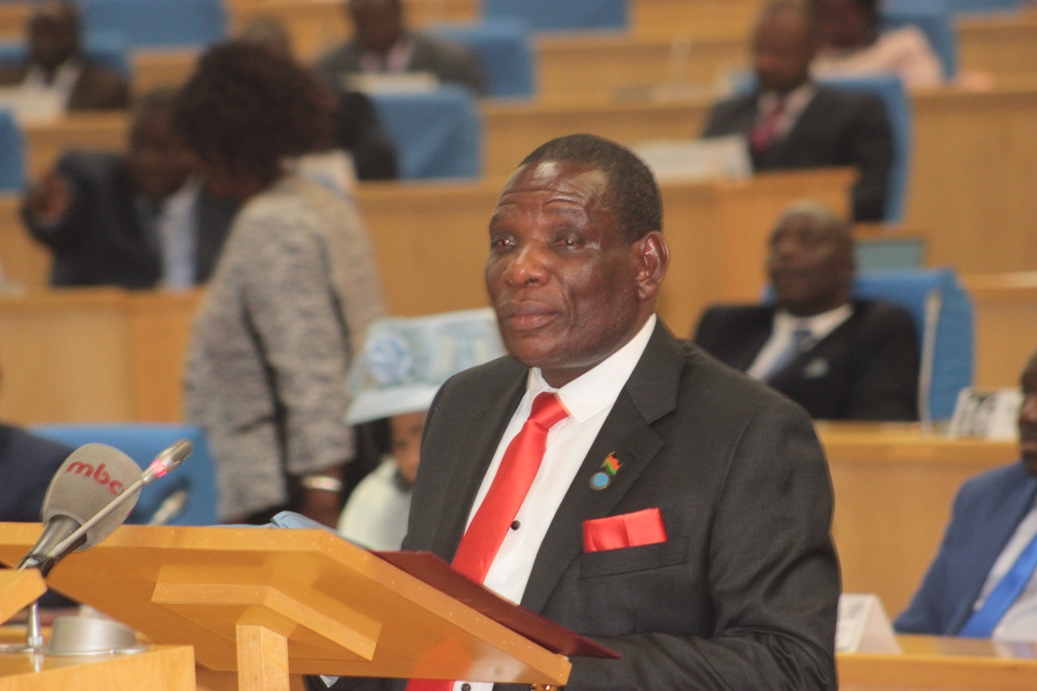Analysts Say Mwanamvekha Faces a Crisis of Credibility as Mid-Year Budget Review Looms
As Finance Minister Joseph Mwanamvekha readies to deliver the Mid-Year Budget Review Statement in Parliament tomorrow, economists and governance commentators are warning that the K8.05 trillion 2025/26 National Budget is facing its toughest credibility test yet — as nearly all its initial assumptions have fallen apart barely six months into implementation.

The mid-year review comes at a turbulent economic moment for Malawi, with key fiscal targets set by Mwanamvekha’s predecessor, Simplex Chithyola Banda, now in tatters. The 2025/26 fiscal plan — tabled before the September 16 General Election — was anchored on optimistic projections: that economic growth would rebound to 3.4 percent, average inflation would ease to 24 percent, and foreign grants would inject K1.14 trillion to support government expenditure. But those rosy expectations have since dimmed dramatically.
According to the Reserve Bank of Malawi (RBM), the country’s growth rate has been slashed to 1.8 percent, while inflation has climbed sharply to 28.9 percent. The International Monetary Fund (IMF) has also projected that foreign aid inflows will decline by nine percent, exposing Malawi’s continued and risky dependence on external financing.
RBM figures further show that within just the first five months of the fiscal year, the budget has already registered a K1.2 trillion deficit — nearly half of the K2.47 trillion annual deficit planned for the entire year. Economists say this trend signals imminent fiscal strain and will likely push Treasury to borrow beyond the K2.3 trillion benchmark set in the national budget.
Economic experts have been quick to interpret the unfolding crisis as evidence that the fiscal plan was built on faulty assumptions. Bertha Phiri, Executive Director of the Malawi Economic Justice Network (MEJN), said the budget was “politically inflated and economically unrealistic.” She warned that the current trends will deepen the deficit, shrink revenue collection due to lower growth, and push public debt to unsustainable levels.
“This change translates into an additional budget deficit, meaning that revenue generation will be low due to low growth, triggering high public debt levels. On the other hand, budget implementation will either have overruns or significant mid-year reallocations,” Phiri observed.
She added that at the microeconomic level, the impact would be felt most in social sectors — with district councils, education, and health expected to suffer major funding shortfalls.
Echoing the concern, Mzuzu University economist Dr. Christopher Mbukwa said the “writing is on the wall” that the 2025/26 budget is “underperforming and facing enormous pressure.” He said the twin shocks of slow growth and rising inflation have cornered the Treasury.
“Reduced growth means less tax revenue, while heightened inflation raises government spending on wages and subsidies. With donor aid also declining, the fiscal deficit will widen, leading to drug shortages, delayed teachers’ salaries, limited fertiliser supplies, and budget cuts on key development projects,” Mbukwa warned.
Adding to the chorus, economic policy analyst Milward Tobias said the budget’s fragility stems from its lack of a clear exchange rate policy, which has made it vulnerable to external shocks.
“From the start, the assumptions were unrealistic. As a net importer, our inflation drivers are heavily influenced by exchange rate movements and prices of imports such as fuel and fertiliser. Without stabilising forex supply, you leave pricing to the black market, which now determines much of the economy,” Tobias explained.
Indeed, while the official exchange rate has remained relatively stable, the parallel market rate has been in turmoil. In March 2025, the informal market premium soared to around 150 percent before dropping slightly above 100 percent the following month — a clear signal of deep market distortions.
Meanwhile, the details of the current fiscal plan underline the scale of the challenge ahead. The 2025/26 Budget set a domestic revenue target of K4.44 trillion, with K4.33 trillion expected from taxes and K106.02 billion from other sources. The government also counted on K1.14 trillion in foreign grants, underscoring Malawi’s dependency on aid.
Total expenditure was projected at K8.05 trillion, of which K6.04 trillion was earmarked for recurrent spending and K2.01 trillion for development projects. Within this, debt interest payments alone were pegged at K2.17 trillion — consuming almost half (49.2%) of all domestic revenue and accounting for 8.4 percent of GDP.
Wages and salaries were projected at K1.53 trillion (5.9% of GDP), including K10 billion for new recruitments and K176 billion for a general salary increment, while pensions and gratuities were budgeted at K170.4 billion to clear arrears and cover monthly obligations.
Now, with inflation eroding purchasing power, donor aid shrinking, and borrowing costs rising, commentators say Mwanamvekha’s mid-year review will not just be about fiscal numbers — it will be a test of credibility and leadership.
As Bertha Phiri put it, “This is the moment to stop dressing politics as economics. The numbers have caught up with the narrative.”
Tomorrow, when the Finance Minister takes the floor, the question will not simply be what has changed — but what remains believable in Malawi’s grand fiscal story.
Follow and Subscribe Nyasa TV :

